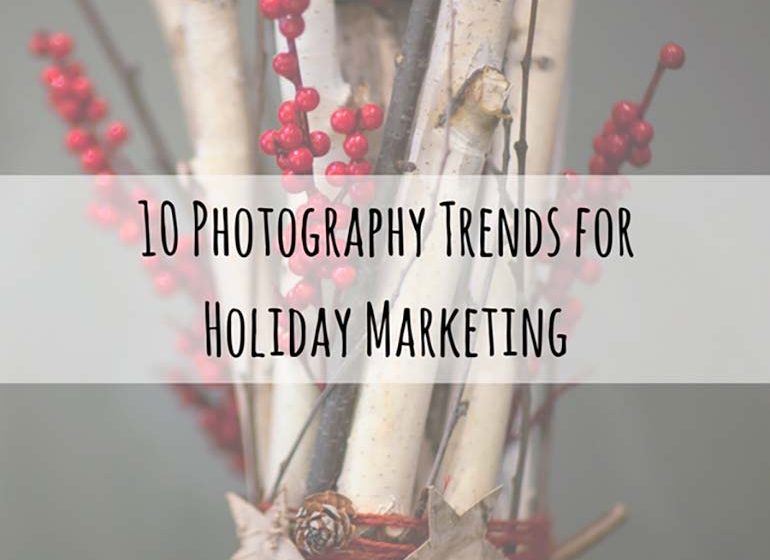How to Get Started on Holiday Marketing Campaigns
In marketing, there are two kinds of people: those who seek last-minute holiday marketing ideas and those who prefer to plan in advance. If you’re reading this, we sure hope you’re the latter, because you’ll find yourself swamped and stressed even if you have great ideas. Use those ideas to plan in advance, and follow the general guidelines to make sure your holiday marketing campaigns as exceptional in practice as they are in theory.
Considering that it’s already November, your holiday marketing campaign must be in the early stages. However, you still have an opportunity to get everything ready for Black Friday, Thanksgiving, and Christmas. You just need to tune in the turbo mode and get some crucial insights from this guide on how to get ready for holiday marketing campaigns.
1. Plan and prepare
If you’d like your holiday marketing campaign to be effective, you should definitely devote a good time interval to planning and preparation. You can start by creating a timeline. According to Facebook’s 2019 Holiday Marketing Guide, this is how an ideal one should look like:
Phase 1. June-August is the time to plan and prepare.
Phase 2. September-October are the months to launch branding and acquisition campaigns.
Phase 3. November-December is when you maximize sales.
Phase 4. January is for post-holiday activities.
You can take it as a foundation and develop your own schedule that based on your experience will help you be more productive in the time frame you set for yourself or your team.
Also, don’t forget to decide beforehand on the occasions you’ll want to cover. For instance, Black Friday, Thanksgiving, and Christmas are a must. However, if you have a big team, you can do holiday marketing for Cyber Monday, Boxing Day, Super Saturday, Free Shipping Day, and New Year.
2. Set goals
There’s one thing you should do before setting goals of a holiday marketing campaign: analyze results from the previous year to evaluate the effectiveness of your efforts. Take a good look at what worked and what didn’t with your clients. Having gone through data and made conclusions to avoid mistakes, you can move forward and set goals. You can aim to grow your audience, get more loyal clients, or increase sales. The goal will determine the course of a campaign, as well as the tools you will need to set up to measure results.
3. Find your target audience
Another decisive stage is to find your target audience. Based on the needs and pain points they have, you’re going to decide on the marketing tools, messages, and CTA’s for your campaign. Try to segment the audience and focus on special deals for smaller groups of consumers. This gives you an opportunity to better appeal to the different interests and offer your customers the right products they’ll definitely want to buy this season.
4. Pay special attention to loyal customers
Whether they have spent years with your brand or are just becoming fans, loyal clients are the audience you should pay special attention to for many reasons. They are those that voluntarily recommend you to friends and colleagues, and they’re the ones that buy your product often and are simply your most loyal customers.
You can turn to loyal customers when you need to gather statistics. They will be extremely helpful during post-holiday activities, in particular when you’ll be asking for feedback.
You can encourage your loyal customers with special discounts, deals, free gifts or give them special perks like making the first purchases. For instance, Amazon Prime members get early access to Black Friday and Cyber Monday specials, and this is a great example of how brands can show gratitude to loyal clients.
5. Sell emotions, not goods or services
Although many people think that their purchases are rational, marketing specialists share different thoughts. Phillip Adcock, a commercial psychologist, cites George Miller and says that emotional reactions are 3,000 times quicker than rational ones. Not to mention, the persuasiveness ratio of emotion is 24 higher than that of reason. What this means is that emotions are absolute drivers of customer behavior.
In the book “Never Split the Difference”, Chris Voss and Tahl Raz claim that before promoting a product or service, it is important to delve into reasons why people need it. For example, what does a takeaway offer? Food? No, it offers time and effort that you save instead of shopping, cooking, and dishwashing. What about a reusable cup? It’s not simply a utensil for liquid. It is comfort, sustainability, and consciousness. Quite often, products and services are about how people feel when they have them. Thus, your holiday marketing campaign should be based on the emotions your audience will be looking for at this time of the year.
6. Invest in content production
In our article “How to use photography to influence consumer behavior”, we have highlighted how important it is to invest in high-quality content. In short, photography evokes emotions and emotions influence customer behavior. Based on color solutions, aesthetics, and quality of photographs, clients usually make purchase decisions.
In addition to photography, you can produce thematic ads. If your goal is to raise brand awareness or attract new clients, you can opt for a video format. In the Facebook guide, it is stated that viewers retain 95% of a message delivered via video, while via text it is only 10%. What’s even more interesting, WebFX says that after watching a video, brand association increases 139%.
Think only about legendary John Lewis and Coca Cola Christmas ads. Their ads not only set up a holiday mood but also make you clearly recognize the brand. These videos have become the calling cards and effective marketing tools.
7. Post-holiday activities
The last phase is the post-holiday activities. During this time you can gather feedback from clients and also continue with sales. It turns out that 44% of people will shop after the holidays in order to take advantage of seasonal sales. You can send out special offers for those that have already made a purchase or promote particular goods or services to entice new customers.
All in all, even if you start in November, you’ll definitely be able to start some holiday marketing campaign to give your business that little boost. Put more effort into planning, appeal to emotions, and invest in high-quality content to sell your big idea this year. As a result, you’ll get happy customers who will turn to your brand, not for single purchases but will become committed advocates for your brand.












